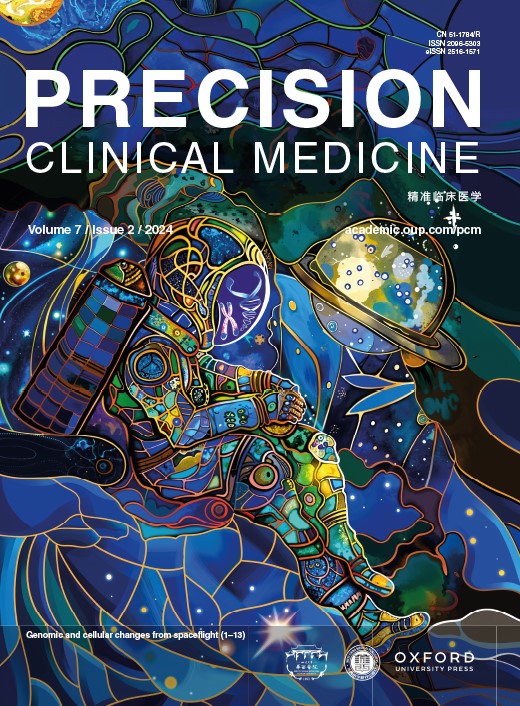Benign lymph node microenvironment is associated with response to immunotherapy
IF 5.1
4区 医学
Q1 MEDICINE, RESEARCH & EXPERIMENTAL
引用次数: 11
Abstract
Abstract Introduction Benign lymph nodes have been considered the hubs of immune surveillance in cancer patients. The microenvironment of these lymphoid tissues can be immune suppressed, hence allowing for tumor progression. Understanding the spectrum of benign findings in bystander lymph nodes in immune checkpoint blockade therapy could prove to be key to understanding the mechanism and assessing treatment response. Methods Benign lymph nodes and spleen were evaluated from patients treated with immunotherapy who subsequently received postmortem examination. We used quantitative immunofluorescence (QIF) to assess tumor infiltrating lymphocytes (TIL) and macrophage marker expression and characterized activation status using a novel multiplexed QIF assay including CD3, GranzymeB, and Ki67. We performed immunohistochemistry to correlate results of QIF. Results Benign lymph nodes from non-responders to immunotherapy showed significantly higher expression of cytotoxic markers and proliferation index (Ki67) in T cells compared to responders. Higher expression of PD-L1 in macrophages was also observed. There was no significant difference in CD3+ expression, but higher levels of CD8+ T cells as well as CD20+ B cells were seen in lymph nodes of non-responders. No significant differences were seen between responder and non-responder splenic tissue. Findings were supported by traditional immunostaining methods. Conclusions While most studies in biomarkers for immunotherapy focus on tumor microenvironment, we show that benign lymph node microenvironment may predict response to immunotherapy. In responding patients, bystander lymph nodes appear to have been mobilized, resulting in reduced cytotoxic T cells. Conversely, patients whose disease progressed on immunotherapy demonstrate higher levels of macrophages that express increased PD-L1, and activated T cells not recruited to the tumor site.良性淋巴结微环境与免疫治疗应答相关
良性淋巴结一直被认为是癌症患者免疫监测的枢纽。这些淋巴组织的微环境可以被免疫抑制,因此允许肿瘤进展。了解免疫检查点阻断治疗中旁观者淋巴结的良性发现谱可能是理解机制和评估治疗反应的关键。方法对经免疫治疗的患者进行尸检,对其淋巴结和脾脏进行检查。我们使用定量免疫荧光(QIF)来评估肿瘤浸润淋巴细胞(TIL)和巨噬细胞标志物的表达,并使用一种新型的多重QIF检测,包括CD3、GranzymeB和Ki67。我们进行免疫组织化学来关联QIF的结果。结果免疫治疗无应答者淋巴结T细胞细胞毒性标志物和增殖指数(Ki67)的表达明显高于应答者。巨噬细胞中PD-L1的表达也较高。两组间CD3+表达差异无统计学意义,但无应答者淋巴结中CD8+ T细胞和CD20+ B细胞的表达水平较高。有反应和无反应的脾组织之间无显著差异。结果得到传统免疫染色方法的支持。虽然大多数关于免疫治疗生物标志物的研究都集中在肿瘤微环境上,但我们发现良性淋巴结微环境可以预测免疫治疗的反应。在有反应的患者中,旁观者淋巴结似乎被动员起来,导致细胞毒性T细胞减少。相反,在免疫治疗中疾病进展的患者表现出更高水平的巨噬细胞,表达增加的PD-L1,激活的T细胞未被募集到肿瘤部位。
本文章由计算机程序翻译,如有差异,请以英文原文为准。
求助全文
约1分钟内获得全文
求助全文
来源期刊

Precision Clinical Medicine
MEDICINE, RESEARCH & EXPERIMENTAL-
CiteScore
10.80
自引率
0.00%
发文量
26
审稿时长
5 weeks
期刊介绍:
Precision Clinical Medicine (PCM) is an international, peer-reviewed, open access journal that provides timely publication of original research articles, case reports, reviews, editorials, and perspectives across the spectrum of precision medicine. The journal's mission is to deliver new theories, methods, and evidence that enhance disease diagnosis, treatment, prevention, and prognosis, thereby establishing a vital communication platform for clinicians and researchers that has the potential to transform medical practice. PCM encompasses all facets of precision medicine, which involves personalized approaches to diagnosis, treatment, and prevention, tailored to individual patients or patient subgroups based on their unique genetic, phenotypic, or psychosocial profiles. The clinical conditions addressed by the journal include a wide range of areas such as cancer, infectious diseases, inherited diseases, complex diseases, and rare diseases.
 求助内容:
求助内容: 应助结果提醒方式:
应助结果提醒方式:


